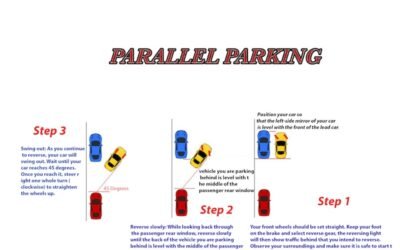Driving is a complex task that demands a range of skills, including spatial awareness, problem-solving, and quick reactions. For individuals with dyslexia, developing these skills can be especially challenging. Nevertheless, with the right approach and support, dyslexics can become safe and confident drivers.
At Oxon Driving Tuitions, we provide a supportive and empathetic learning environment to help dyslexic learners succeed. We offer tailored resources and techniques to facilitate their progress. In this article, we will provide a comprehensive guide to teaching dyslexics to drive, which includes tips, techniques, and resources to help them succeed.
I. Understanding Dyslexia and its Effects on Driving
Dyslexia is a neurodevelopmental disorder that affects cognitive abilities such as reading, writing, and information processing. It can make tasks that demand rapid or precise information processing, such as following road signs or understanding driving instructions, particularly difficult. When teaching someone with dyslexia to drive, it is crucial to understand the specific challenges they face and be patient and empathetic.
II. Visual Aids and Task Breakdown
One of the most effective ways to support someone with dyslexia in developing driving skills is through visual aids, such as diagrams or videos. These aids can clarify instructions and make complex concepts easier to understand. Additionally, breaking down tasks into smaller components can simplify the learning process and make it less overwhelming.
III. Practice and Encouragement
Regular practice is essential for anyone learning to drive, but especially for dyslexics. Encouragement and positive reinforcement strategies, such as celebrating small victories and maintaining a supportive learning environment, can help to build confidence and keep motivation levels high.
IV. Accommodations and Resources
There are a variety of accommodations that may aid dyslexics in learning to drive. These may include special licence plates or car modifications that make it easier to read road signs or understand driving instructions. Communication with the relevant authorities can ensure that necessary accommodations are made. Dyslexics and their families also have access to resources such as support groups and online communities.
V. Conclusion
In conclusion, teaching someone with dyslexia to drive necessitates a tailored approach, patience, and empathy. Visual aids, breaking down tasks, regular practice, and positive reinforcement can all make the learning process easier and more manageable. At Oxon Driving Tuitions, we support dyslexics in developing the skills and confidence they need to become safe and capable drivers.
If you or someone you know is struggling with dyslexia and learning to drive, we encourage you to contact us at Oxon Driving Tuitions. Our team of experienced instructors is available to assist and support you throughout the learning process.



0 Comments